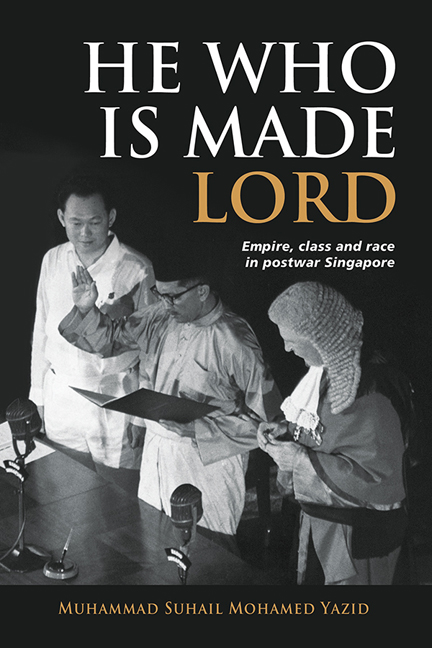Book contents
2 - Redesigning the Colonial State
Published online by Cambridge University Press: 01 March 2024
Summary
Singapore Separated
Beneath the temporal layers of Yusof's swearing-in ceremony was Singapore's inextricable historical position as part of the Malay World. In 1819, 140 years before the coming of the Malayan-born Yang di- Pertuan Negara, the British East India Company enthroned Hussein Shah as sovereign ruler of Singapore. The island was at this time under the domain of the Johor-Riau Sultanate. As the eldest son of Sultan Mahmud Shah III, Hussein was in line to succeed his father but lost this claim due to a succession dispute. His younger brother, Abdul Rahman, received the backing of the Dutch and the Bugis chiefs and was instead crowned as sovereign. In exchange for recognition as sultan and a reasonable pension, Hussein gave his assent to an adventurer from the Company, Sir Stamford Raffles, the so-called “founder of modern Singapore”, to build a factory on the island.
The political role of the British-recognized sultan, however, withered after sovereignty over Singapore was later transferred to the British Crown in 1824. Hussein's descendants nevertheless continued to live within the premises of the Istana Kampung Glam, the palace compound belonging to the sultan located on the south-eastern end of the island. Under the
sovereign rule of Britain, Singapore gradually transformed into a colonial metropolis. It was later governed as part of the Straits Settlements, a collection of British-controlled port cities which included Penang and Melaka. From 1874, the British began to intervene in the polities of the Malay Peninsula due to increasing pressure from commercial interests who wanted greater stability in the Malay states. Through treaties and protectorate agreements, the Malay rulers gradually ceded authority over most of their affairs to colonial officials, resulting in the bureaucratization of these polities in line with “enlightened” European standards and the facilitation of a more efficient economic system to exploit labour and natural resources.
The colonial regime reordered the island of Singapore and the other peninsular polities under a loose (and at times contested) conglomeration of “British Malaya”. In Singapore, the British abolished Malay kingship in favour of direct colonial rule, but they opted for a different strategy in the peninsular states, choosing instead to strengthen the positions of the traditional elites and legitimize the sovereign status of the Malay rulers.
- Type
- Chapter
- Information
- He Who Is Made LordEmpire, Class and Race in Postwar Singapore, pp. 38 - 69Publisher: ISEAS–Yusof Ishak InstitutePrint publication year: 2023

